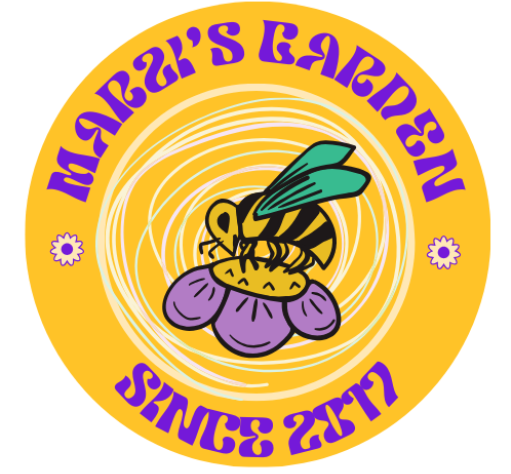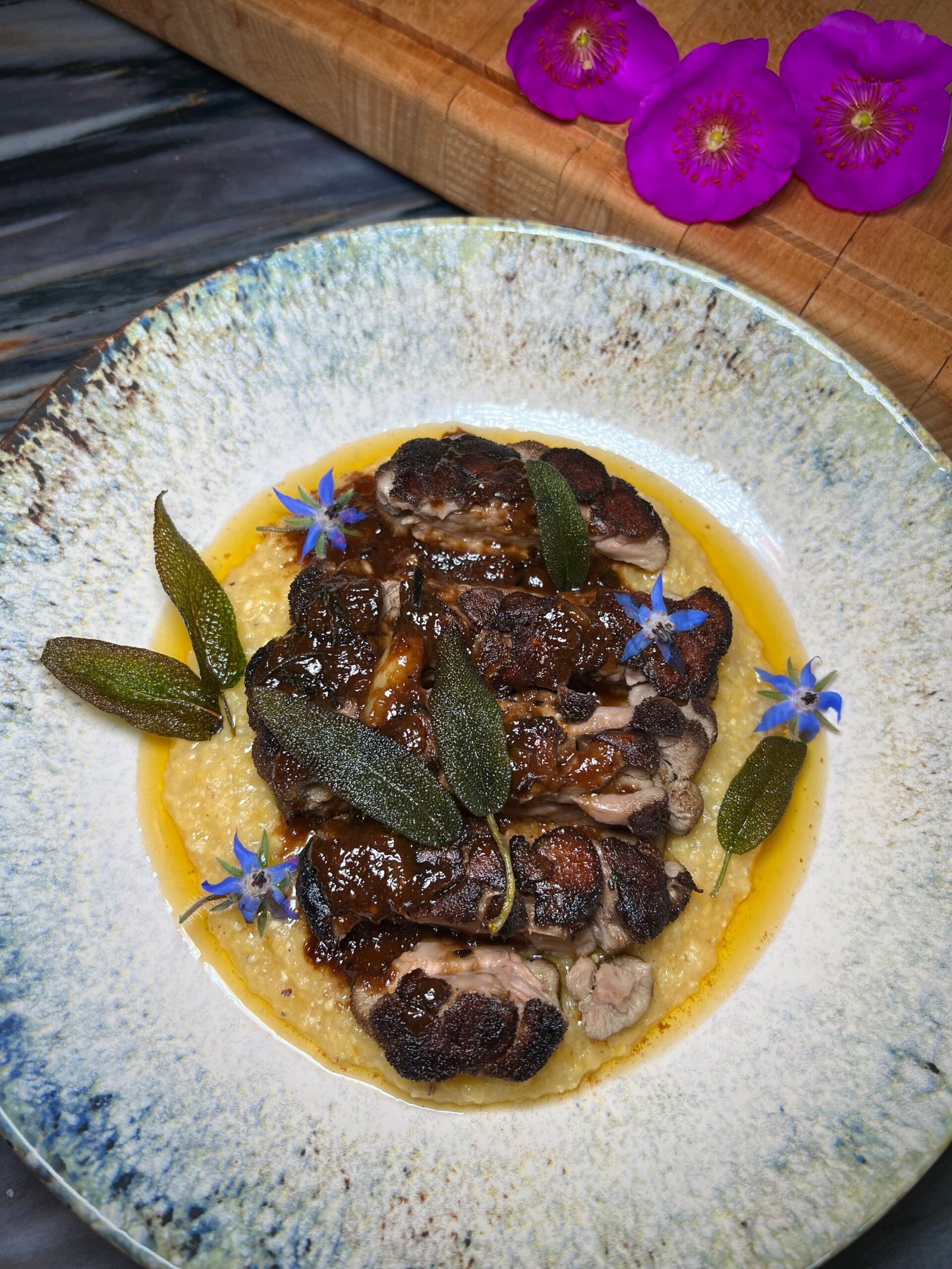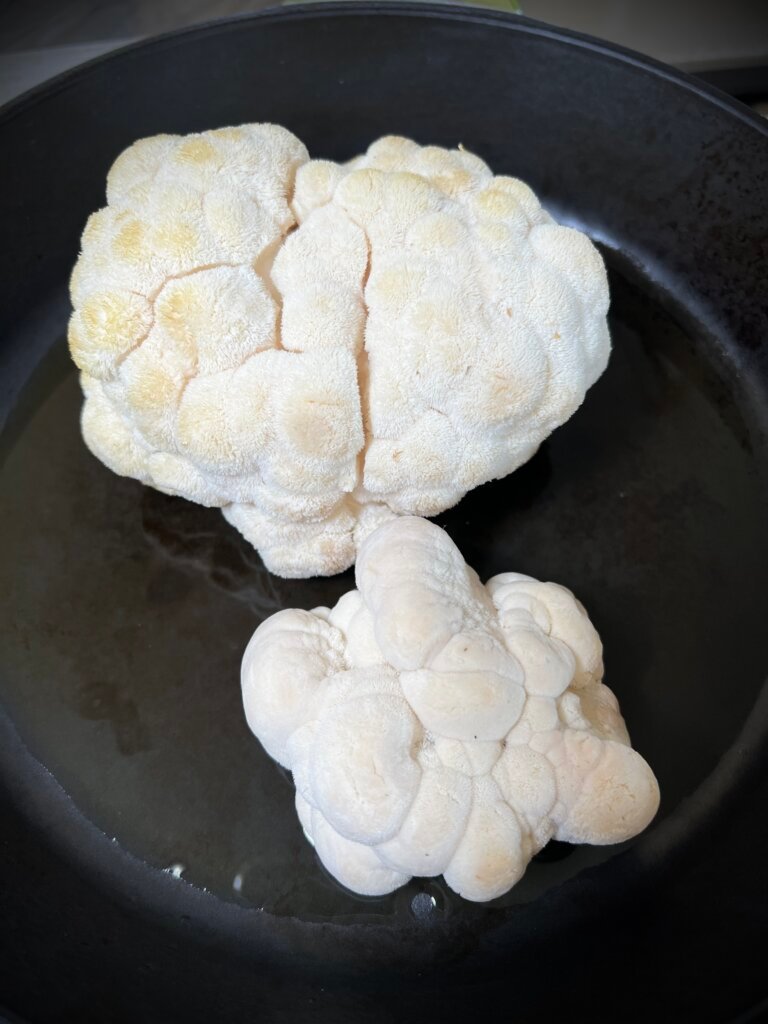
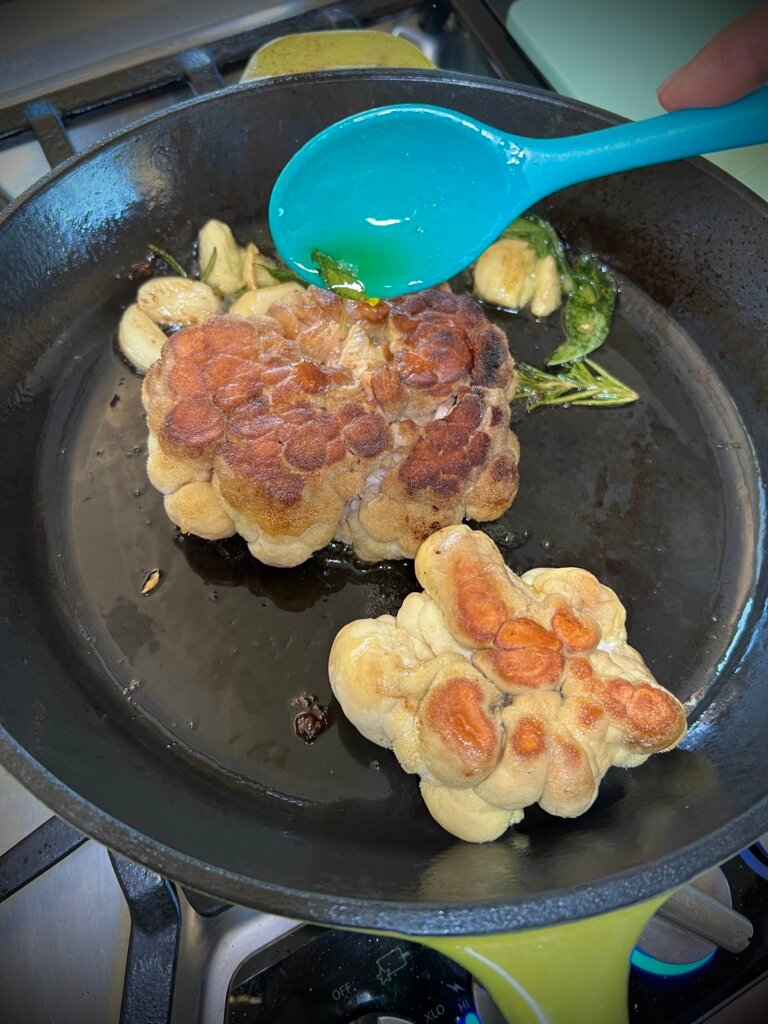
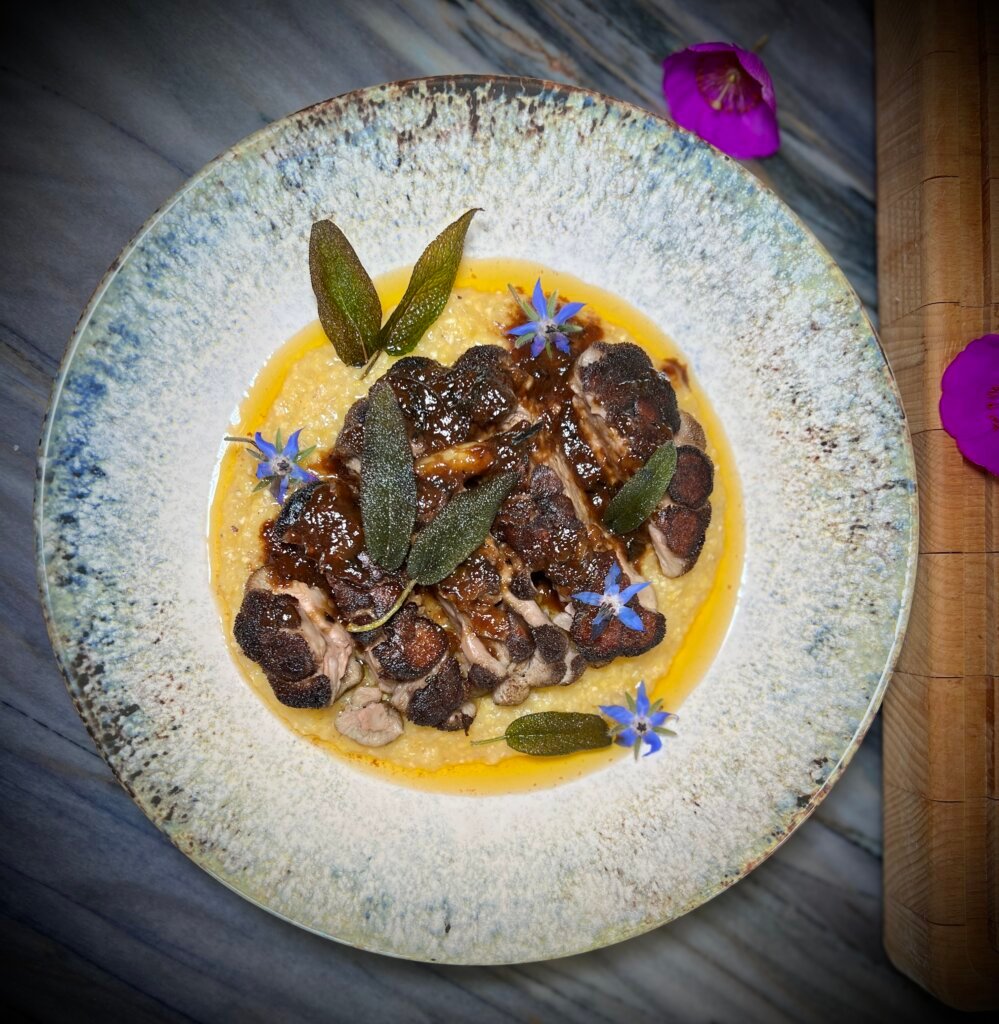
mane mushrooms turn into amazing vegetarian “steaks” that are rich, flavorful, and easy to cook on a busy weeknight. They’ll leave you feeling cozy and satisfied, like you had plenty of time to relax in the kitchen. This recipe is also perfect for a date night, even if your date is a vegetarian or you’re trying to convince them to try plant-based meals. The mushrooms sear up golden brown, and the pan sauce transforms the browned butter into a luxurious, creamy creation bursting with peppery flavor, just like a classic steak au poivre.
It’s a guaranteed crowd-pleaser! Don’t worry if lion’s mane mushrooms seem unfamiliar – this recipe is surprisingly simple and will have you enjoying these delightful fungi in no time.
Table of content:
All About Lion’s Mane Mushrooms: Discover this unique ingredient!

Lion’s mane mushrooms are big, white, fluffy mushrooms that look like a lion’s mane (cool, right?). They have a meaty texture and savory flavor, making them great for vegetarian meals. You can find them fresh at some farmer’s markets or health food stores.
But don’t let its shaggy appearance fool you, the lion’s mane mushroom is a fascinating and versatile ingredient with a rich history. Nicknamed the “hedgehog mushroom” for its cascading spines, this unique fungus boasts a flowing white mane that resembles a lion’s, hence its more common name. While it may not win any beauty contests in the mushroom kingdom, lion’s mane is gaining popularity for its potential health benefits and delicious culinary uses.
For centuries, lion’s mane, also known scientifically as Hericium erinaceus, has been a staple in East Asian cuisine and traditional medicine. Today, it’s finding its way into kitchens and wellness routines around the world. People are incorporating lion’s mane into soups, stews, and stir-fries, enjoying its unique texture and subtle seafood-like flavor. Beyond the plate, lion’s mane is consumed as a tea, taken in tinctures, or found in capsule form, all in hopes of unlocking its potential health benefits.

What makes lion’s mane mushrooms so interesting?
Lion’s Mane Mushroom: A Potential Powerhouse for Your Mind and Body
Lion’s mane mushrooms have been used for centuries in East Asian medicine, but recent research is starting to unveil their potential benefits for modern health. Here’s a deeper dive into what lion’s mane might be good for:
Brainpower Boost:
- Cognitive Function: Studies suggest lion’s mane may improve cognitive function, memory, and focus. It might achieve this by stimulating the production of nerve growth factor (NGF), a compound crucial for brain cell growth and repair.
- Neurodegenerative Diseases: Early research indicates lion’s mane could offer protection against neurodegenerative diseases like Alzheimer’s and dementia. However, more studies are needed to confirm this.
Mental Wellbeing:
- Mood Support: Lion’s mane might offer some relief from symptoms of mild depression and anxiety. Some studies suggest it may help regulate the production of nerve growth factors that play a role in mood regulation.
Digestive Health:
- Prebiotic Power: Lion’s mane contains prebiotics, which are dietary fibers that promote the growth of good bacteria in your gut. This can contribute to overall digestive health and potentially reduce symptoms like bloating and constipation.
How to Enjoy Lion’s Mane:
- Culinary Creativity: Fresh lion’s mane offers a unique umami flavor and meaty texture. It’s a versatile ingredient that shines in soups, stews, stir-fries, or simply sautéed with garlic and herbs.
- Pro tip: Cook it until slightly crispy to avoid any bitterness.
- Seafood Substitute: Lion’s mane’s meaty texture and savory taste make it a great alternative for seafood like crab or lobster.
Important Note:
While the potential benefits of lion’s mane are promising, it’s crucial to consult with your healthcare provider before taking it as a supplement, especially if you have any underlying health conditions or take medications.
Where to buy lions mane mushrooms?
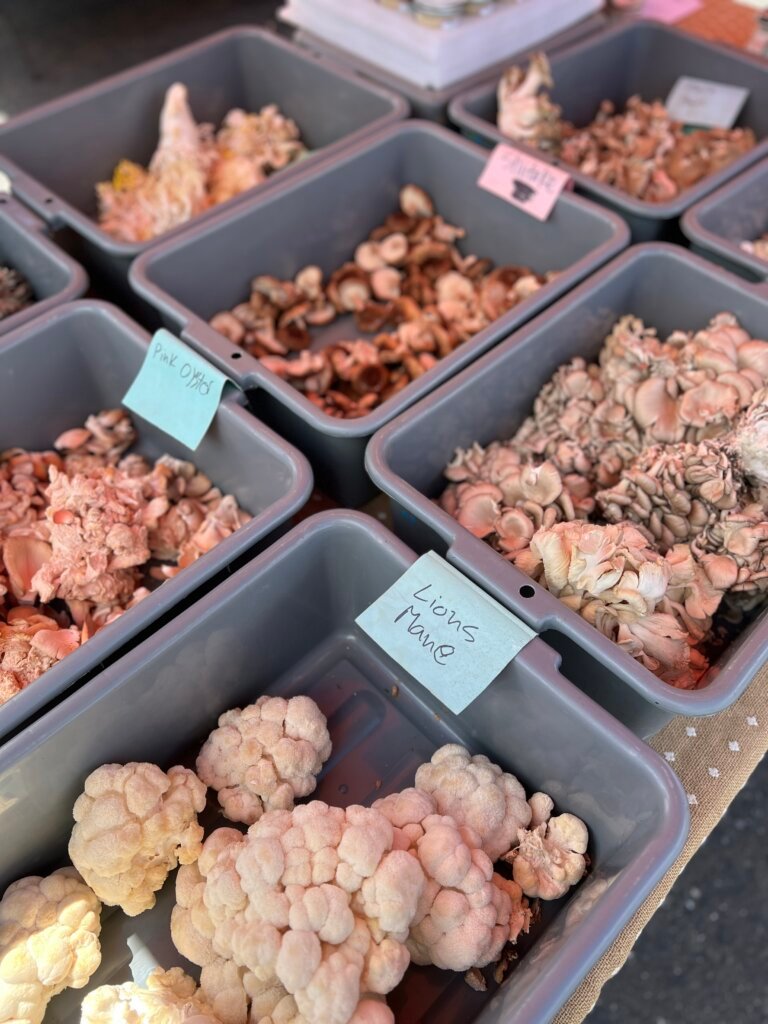
There are two main ways to experience the potential benefits of lion’s mane: through food or supplements.
Fresh for Flavor:
For culinary adventures, seeking out fresh lion’s mane mushrooms is the way to go. These unique fungi are most likely to be found at your local farmers market. Farmers markets often feature local mushroom growers who may carry lion’s mane alongside their other offerings. This is a fantastic way to support local agriculture and ensure you’re getting the freshest possible mushrooms.
Supplements for Potential Health Benefits:
If you’re interested in exploring the potential health benefits of lion’s mane, you can find it in supplement form. These come in various options like capsules, liquids, tablets, or even powder. While some health food stores and online retailers might carry them, exploring the aisles of a well-stocked grocery store might also lead you to lion’s mane supplements.
My Preference:
However, for the best quality and most vibrant flavor, I always recommend seeking out fresh lion’s mane mushrooms at the farmers market whenever possible.
The best way to cook lion’s mane mushrooms
While searing is widely considered the best way to cook lion’s mane mushrooms, there are many paths to deliciousness. The simplest preparation involves cutting the mushrooms and searing them in butter, but this technique can be elevated in a few ways. Adding aromatics like garlic or herbs to the butter, as in this recipe, infuses the mushrooms with additional flavor. Marinating them beforehand can also add depth and complexity.
Through experimentation, I’ve discovered that I prefer preparing lion’s mane mushrooms as “steaks.” Their meaty texture allows them to act like sponges, soaking up the flavorful, browned butter as you baste them during cooking. This results in golden brown, perfectly seared mushrooms that retain a natural “juiciness.” The result is a rich and flavorful dish that transcends the typical mushroom experience, offering an umami-packed protein alternative. While searing is my favorite method, it’s certainly not the only way to enjoy lion’s mane mushrooms.
Beyond the Sear:
There’s a whole world of possibilities for cooking lion’s mane mushrooms. Here are a few additional ideas:
- Simmering: Lion’s mane shines in soups, stews, and broths, where the gentle simmering process extracts its subtle flavors, creating a deeply satisfying and umami-rich base.
- Shredded Delights: Shred the mushrooms for a flavorful and textural substitute for pulled pork or chicken in tacos, burritos, or lettuce wraps.
- Crispy Cravings: Slice them thinly and pan-fry until crispy, creating a delicious topping for salads, pizzas, or pastas.
- Flour Power: Dredging lion’s mane in flour before pan-frying adds a delightful crunch and enhances its meaty texture.
The beauty of lion’s mane lies in its versatility. Feel free to experiment with marinades using ingredients like soy sauce, miso paste, citrus juices, or herbs to personalize your experience. For dried lion’s mane, simply soak them before using them in soups or stews, or grind them into a powder for incorporation into sauces, smoothies, or even tea.
No matter which method you choose, the key is to cook lion’s mane mushrooms until they achieve a slightly crispy exterior and a tender interior. With a little exploration, you’ll discover the perfect way to unlock the full potential of this fascinating fungus.
Ingredient Checklist: Everything you need for this recipe.
Now it’s time to gather the ingredients for this delicious dish! Here’s a complete shopping list:
For the Lion’s Mane Steaks:
- 1 tablespoon olive oil
- 5 tablespoons salted butter (or vegan butter alternative)
- 3-4 medium lion’s mane mushrooms (oyster or maitake mushrooms can be substituted, but lion’s mane are preferred)
For the Herb-Infused Pan Sauce:
- 4 cloves garlic, peeled and crushed
- 2 sprigs rosemary
- 8 sprigs sage (fresh is best, but dried can work in a pinch)
- 1 teaspoon red pepper flakes (adjust for your spice preference)
- 3 tablespoons heavy cream (cashew cream is a great vegan alternative)
- 1 tablespoon balsamic vinegar, with extra on hand for adjusting the flavor
- Kosher salt and freshly ground black pepper to taste
For the Creamy Polenta (Optional):
- 1/2 cup yellow cornmeal
- 2 cups water
Finishing Touches:
- Fried sage leaves (for garnish)
- Fresh herbs like parsley or chives (alternative garnish)
Tips:
This recipe calls for 8 fresh sage leaves, but you can get creative and use them in different ways! Here are some tips:
Out of those 8 leaves, we’ll utilize 6 for that delightful fried sage garnish. But don’t discard the remaining 2! Instead, put them to good use by infusing their flavor directly into the pan sauce.
For the best results, use fresh sage leaves whenever possible. However, if fresh sage isn’t available, you can substitute 1-2 teaspoons of dried sage, but keep in mind that dried herbs tend to have a more concentrated flavor.
In a pinch, if you don’t have sage at all, you could try substituting with another fresh herb like lemon thyme or curry leaves. However, sage offers a unique flavor profile that complements the lion’s mane mushrooms beautifully, so using a substitute will alter the taste.
Feel free to adjust the amount of red pepper flakes for your desired level of spiciness.
This recipe uses polenta as a base, but you can also serve the lion’s mane mushrooms over rice, mashed potatoes, or another side dish of your choice.
How to make this lions mane mushroom steak
Step 1: Crispy Fried Sage
Begin by heating some olive oil in a small frying pan over medium heat. Once hot, add 6 sage leaves and fry for 1-2 minutes, being careful not to burn them. Remove the fried sage with a slotted spoon and place them on a plate. These will be used as a garnish later.
Step 2: Creamy Polenta (Optional)
In a separate saucepan, combine the cornmeal and water over medium heat. Whisk vigorously with a silicone whisk to ensure there are no lumps. Bring to a soft simmer and continue whisking frequently to prevent clumps from forming.
Let the polenta simmer for 4-5 minutes, or until it starts to thicken. Increase the whisking frequency to achieve a thick and creamy consistency over the next 5-6 minutes. Reduce the heat to low and season with salt to taste. Continue stirring and cook for an additional 5-7 minutes, or until the polenta reaches your desired creaminess. Feel free to add another 1/2 cup of water during cooking if needed. The polenta will be cooked through after about 20 minutes, but you can continue cooking for up to 40 minutes for an even creamier texture.
Step 3: Seared Lion’s Mane Mushrooms
While the polenta cooks, heat a cast iron skillet over medium heat. Add olive oil and 1 tablespoon of butter. Let the butter melt completely and swirl it to combine with the oil.
Place a lion’s mane mushroom in the pan and sear it on both sides. If you have a grill press, use it to press down on the mushroom for even cooking. Sear for approximately 2 minutes per side until the sides are lightly golden brown.
Step 4: Herb-Infused Basting and Pan Sauce
Add the crushed garlic cloves, rosemary, remaining 2 sage leaves, and red pepper flakes to the pan. Add another 2 tablespoons of butter. Once melted, tilt the pan and use a spoon to baste the mushroom continuously with the sizzling butter for about 8-10 times on each side before flipping and repeating the process.
Repeat this searing and basting process with the remaining lion’s mane mushrooms, adding another tablespoon of butter to the pan as needed. Once cooked, set the mushrooms aside on a cutting board.
Step 5: Finishing Touches
To make the pan sauce, leave the herbs, garlic, and butter in the pan and reduce the heat to medium-low. Pour in the heavy cream and stir to combine. Season with salt, pepper, and balsamic vinegar to taste. Adjust seasonings as needed.
Plating and Serving:
To assemble the dish, add a generous scoop of polenta to a plate. Top it with sliced lion’s mane mushrooms and drizzle with the pan sauce. Garnish with the reserved fried sage leaves and serve warm.
This recipe features delicious lion’s mane mushrooms seared to perfection and served over creamy polenta with a flavorful herb pan sauce. Oyster or maitake mushrooms can be substituted, but lion’s mane is preferred for its meaty texture.

EQUIPMENT
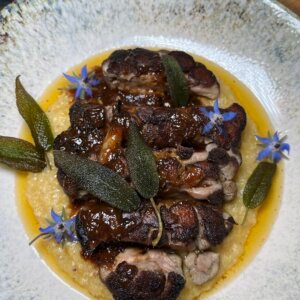
Lion’s Mane Mushroom Steaks with Creamy Polenta and Buttery Sage Pan Sauce
Ingredients
For the Lion's Mane Steaks:
- 3-4 medium lion’s mane mushrooms oyster or maitake mushrooms can be substituted
- 1 tablespoon olive oil
- 5 tablespoons salted butter or vegan butter alternative
- 4 cloves garlic peeled and crushed
- 2 sprigs rosemary
- 6 fresh sage leaves plus 2 for garnish
- 1 teaspoon red pepper flakes adjust for spice preference
- Kosher salt
- Freshly ground black pepper
For the Creamy Polenta
- 1/2 cup yellow cornmeal
- 2 cups water
- Kosher salt
- 1 tablespoon butter or vegan butter alternative
- Drizzle of olive oil optional
For the Herb Pan Sauce:
- 3 tablespoons heavy cream cashew cream is a good vegan alternative
- 1 tablespoons balsamic vinegar plus more to taste
- Freshly ground black pepper
For Garnish:
- Fried sage leaves
- Fresh herbs like parsley or chives optional
Instructions
- Crispy Fried Sage (Optional): Heat olive oil in a small frying pan over medium heat. Add 6 sage leaves and fry for about 2 minutes, being careful not to burn them. Remove with a slotted spoon and place on a paper towel-lined plate to drain. These will be used for garnish later.
- Creamy Polenta (Optional): In a separate saucepan, combine cornmeal and water over medium heat. Whisk vigorously with a silicone whisk to ensure there are no lumps. Bring to a soft simmer and continue whisking frequently to prevent clumps from forming.
- Let the polenta simmer for 4-5 minutes, or until it starts to thicken. Increase the whisking frequency to achieve a thick and creamy consistency over the next 5-6 minutes. Reduce the heat to low and season with salt to taste. Continue stirring and cook for an additional 5-7 minutes, or until the polenta reaches your desired creaminess. Feel free to add another 1/2 cup of water during cooking if needed. The polenta will be cooked through after about 20 minutes, but you can continue cooking for up to 40 minutes for an even creamier texture.
- Pro Tip: Want an extra decadent polenta? For an even richer and creamier polenta, substitute some of the water with chicken broth and add a tablespoon of butter or heavy cream while whisking during the simmering process.
- Once cooked, remove the polenta from the heat and stir in a tablespoon of butter and a drizzle of olive oil (optional) for added flavor and sheen. Season with additional salt and pepper to taste.
- Seared Lion's Mane Mushrooms: Heat a cast iron skillet over medium heat. Add olive oil and 1 tablespoon of butter. Let the butter melt completely and swirl it to combine with the oil.
- Place a lion’s mane mushroom in the pan and sear it on both sides. If you have a grill press, use it to press down on the mushroom for even cooking. Sear for approximately 2 minutes per side until the sides are lightly golden brown.
- Herb-Infused Basting and Pan Sauce: Add the crushed garlic cloves, rosemary, remaining 2 sage leaves, and red pepper flakes to the pan. Add another 2 tablespoons of butter. Once melted, tilt the pan and use a spoon to baste the mushroom continuously with the sizzling butter for about 8-10 times on each side before flipping and repeating the process.
- Finishing Touches: Remove the cooked mushrooms from the pan and set them aside on a cutting board.
- Leave the herbs, garlic, and butter in the pan and reduce the heat to medium-low.
- Pour in the heavy cream and stir to combine. Season with salt, pepper, and balsamic vinegar to taste .
- Adjust seasonings as needed.
- Slice the cooked lion's mane mushrooms.
- Plating and Serving: To assemble the dish, add a generous scoop of polenta (if using) to a plate. Top it with sliced lion's mane mushrooms and drizzle with the pan sauce. Garnish with the reserved fried sage leaves and fresh herbs like parsley or chives (optional). Serve warm and enjoy!
Video
Notes
Nutrition
Looking for other plant based recipe?


Disclosure: This post may contain affiliate links to products (including Amazon). I’ll earn a small commission if you make a purchase through my link, at no additional cost to you! Regardless, I only link to products that I personally use on our homestead or believe in.
